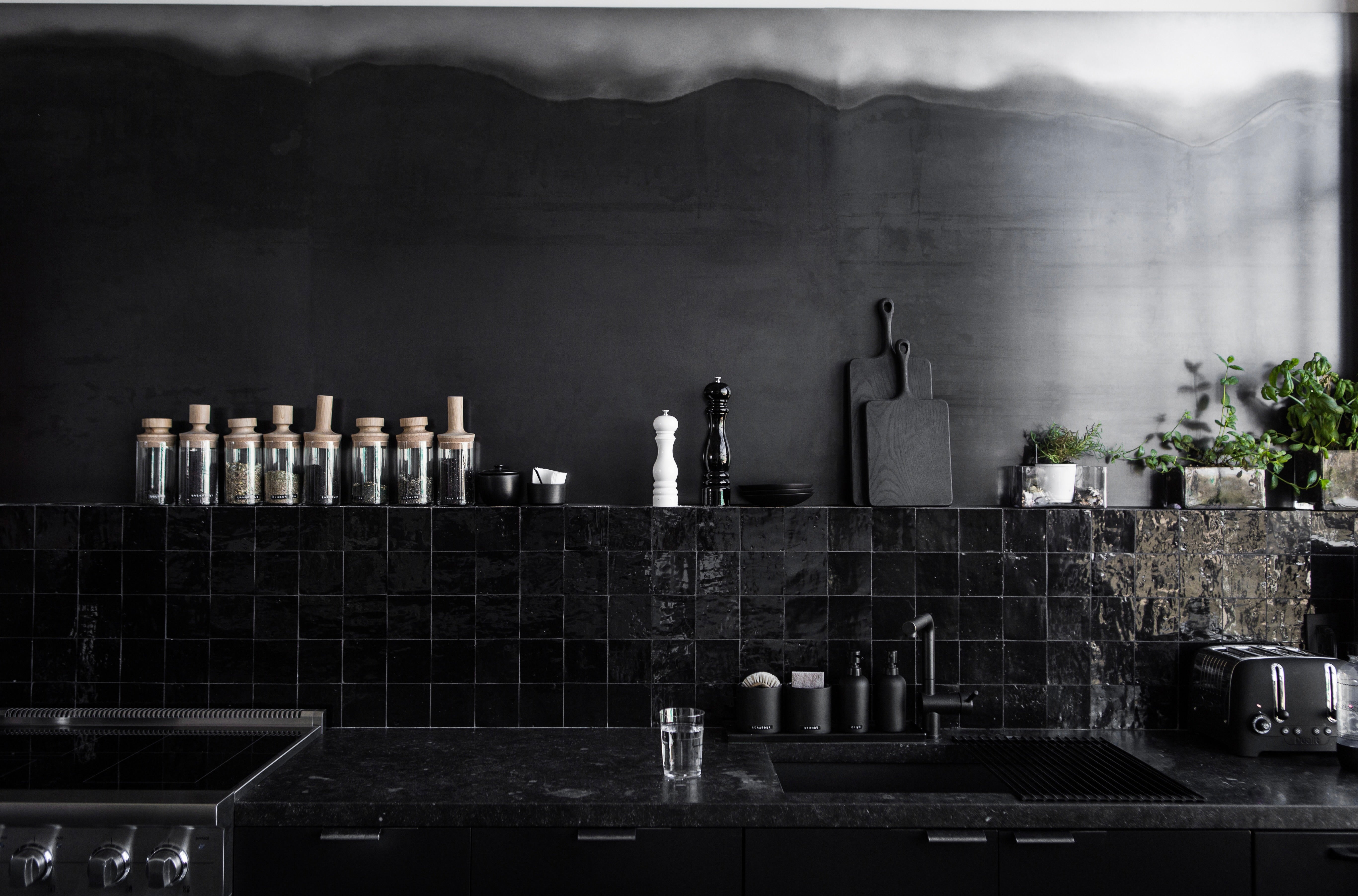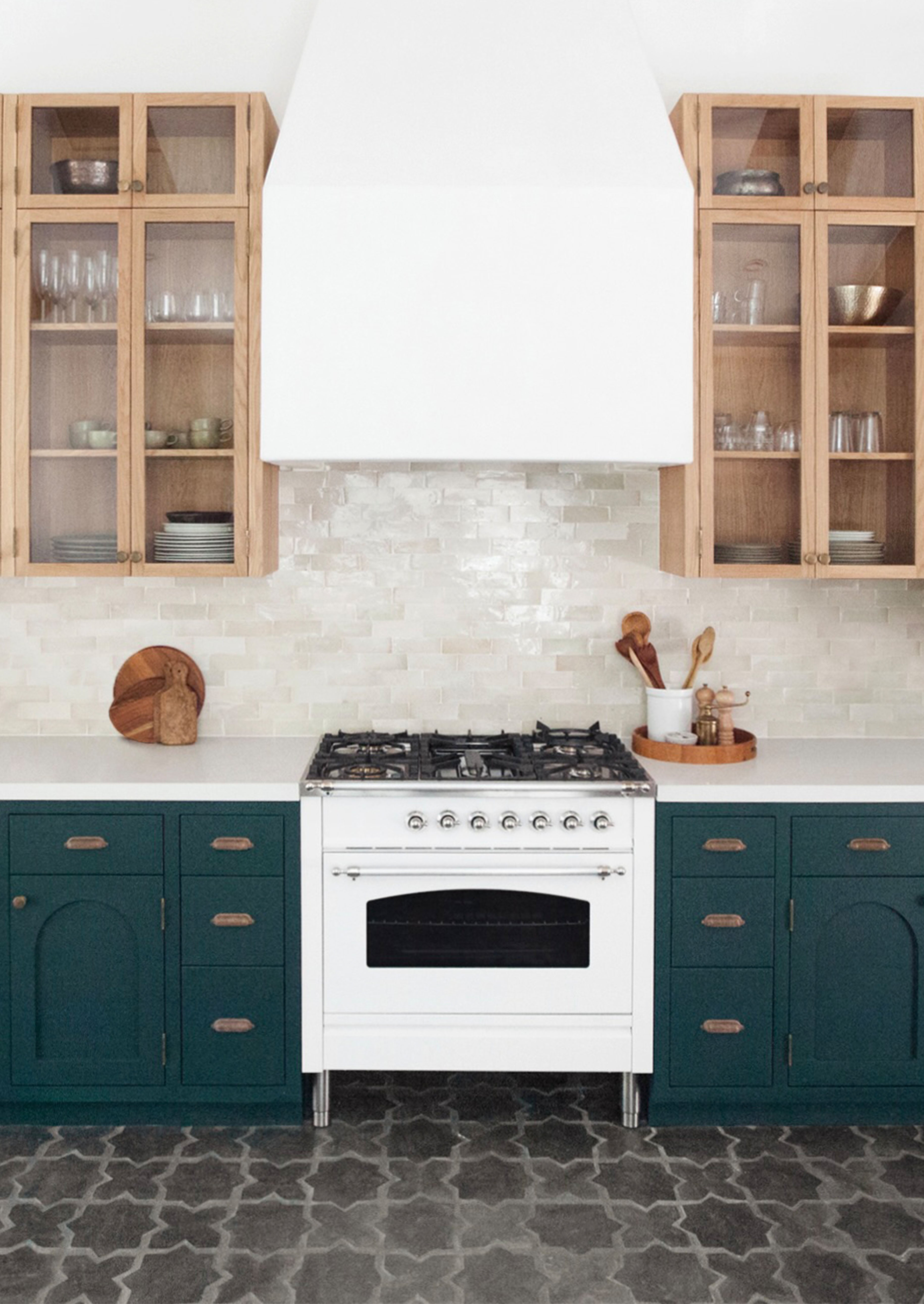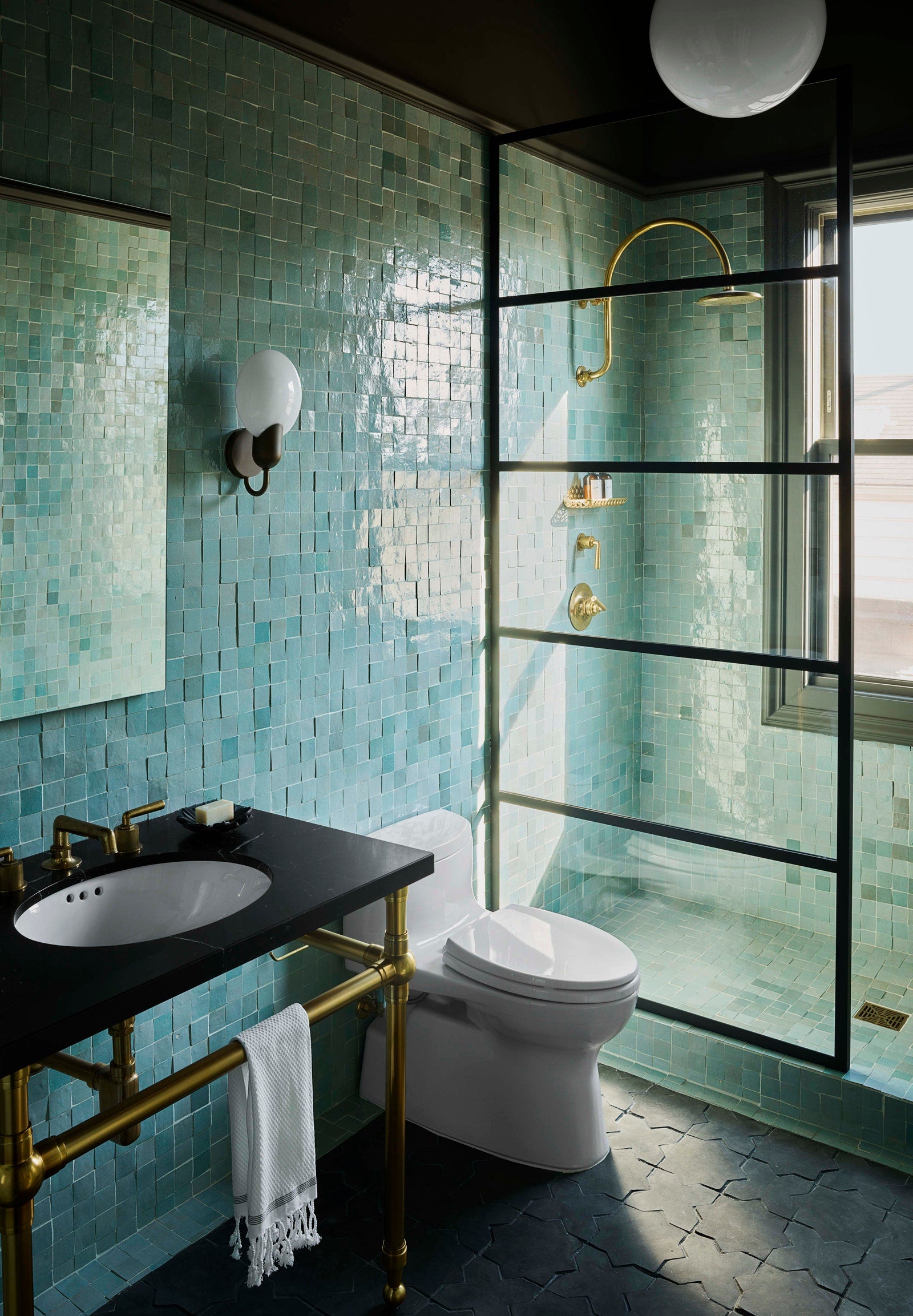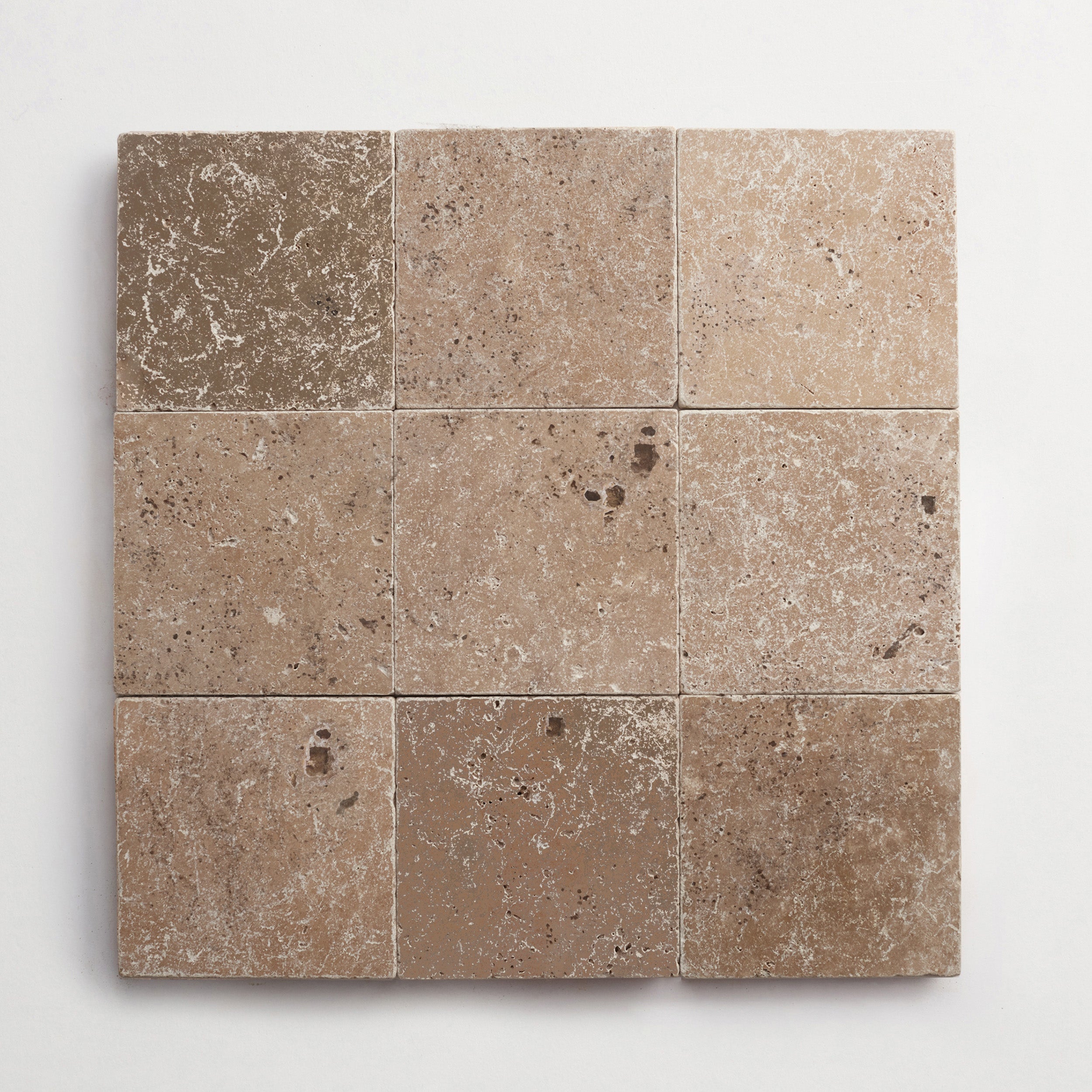matte vs glossy tile: which is right for your space?
by clé tile | published: Jan 23, 2024

zellige tile in scribes ink. design: nicole hollis / photo: joliet nhid studio
we can think of about a hundred things to consider when choosing tile for a project—material, color, size, shape, and heat resistance, to name a few. but there’s one consideration many people get stumped on, and that’s the finish. matte vs. glossy or polished — which is the right tile for your space?
well, it depends.
understanding the difference between matte and glossy tile
you may be wondering what makes matte tile, well, matte, and what gives glossy tile its polished look. answer: it’s all in how the tile is finished. multiple techniques such as glazing and polishing can create both matte and glossy looks, so let’s look at them more closely.
glazed vs. unglazed tile
first, you have unglazed and glazed tile. take terracotta, brick, and ceramic tile, which all come in unglazed and glazed options. unglazed tile generally gives you a classic matte finish—one that celebrates that natural hues and texture of the material. glazed tile, on the other hand, can be matte or glossy in appearance. some glazes create a matte finish while others create a more polished looking finish.
some people mistake glaze for a polish, but really, it’s a layer of enamel or liquid glass that’s applied to a tile’s clay body. (it then fuses to the clay during the firing process.)
unpolished vs. polished tile
then there’s polished tile, which applies specifically to stone and sometimes refined clay materials like porcelain. this tile undergoes a polishing process to create a smooth, shiny surface. unpolished tile, meanwhile, maintains its raw, natural appearance, giving it a matte look.
matte vs. glossy tile
as you can see, you’d be hard-pressed to create a hard and fast distinction between matte and glossy tile. “matte tile” may refer to porcelain tile that’s been finished with a matte glaze, or it may refer to unpolished limestone tile. and “glossy tile” may refer to glazed zellige or polished marble.
we’ll be exploring matte and glossy tile in a general sense here, with a focus on unglazed and glazed tile. for more information about stone tile, check out our article on honed tile.
characteristics of matte tiles
matte tiles have a flat, non-reflective surface, often with a lot of texture. think: natural brick, earthy terracotta, and love-worn cement. if they are unglazed (as opposed to finished with a matte glaze) matte tiles are especially prone to patina. these tiles are known for their slip resistance, particularly when exposed to water, and for their ability to hide visible wear and tear.
characteristics of glossy tiles
glossy tiles have a more reflective and polished-looking finish—one that often adds a modern or sophisticated touch to a space. glossy tiles sometimes develop a patina as well, but they generally stay more consistent over time. they can become slippery when wet, but this feature also makes them especially easy to clean. glossy tiles can also show smudges and fingerprints more readily.

wall: eastern earthenware subway in rice paper; floor: belgian reproduction star + cross bundle. design: taylor + taylor designs / photo: tiffany g studio

wall: 2x6 glazed zellige in sea salt; floor: belgian reproduction circle + losange bundle. design: becki owens / photo: rebekah westover
comparing glossy vs matte tile
while matte and glossy tile each have their pros and cons, neither finish is inherently better than the other. generally, what you choose will be a matter of aesthetic preference. sometimes, you’ll have application and maintenance to think about: matte tiles can provide a greater degree of slip resistance for floors, and polished tiles can be easier to care for.
aesthetics and style
matte tile has texture in spades. if the tile is unglazed, it may develop a deeper patina over time. (that’s a major pro in our book.)
glossy and polished tiles, on the other hand, offer a reflective finish that can add a needed dimension to a space if most of the other surfaces are matte and/or unfinished. high-gloss tile also reflects light—something to consider as you plan the lighting in your space.
safety considerations
matte-finish tile offers better slip resistance, making it an ideal choice for wet or high-traffic areas like the bathroom, kitchen, and mudroom. it’s also great for accessible spaces since it offers better traction.
if you’re contemplating using polished tile in one of these areas and traction is important, you may want to consider incorporating mats and rugs into your design to increase slip resistance.
durability and longevity
both matte and glossy tile will last for many years when installed correctly and maintained regularly, though glossy tiles used in trafficked areas will show the wear and tear sooner than matte or unglazed tiles. matte options are especially durable because their rough surface can disguise scratches, scuffs, and stains. they also generally have higher abrasion and impact resistance.

wall: white gloss modern farmhouse brick; floor: 2x8 cement solid in basil. design: jr corleto / photo: virtually here studios
maintenance and cleaning
both matte and glossy tile should be maintained regularly, and care will differ from material to material. if you’re installing matte cement tile in a high-traffic area, for example, you can expect to have it resealed once or twice a year. if you’re installing a glossy subway tile, it may not require sealing (though some porous options can benefit from it). your contractor should have the experience to offer helpful insight here.
as for cleaning, mild, ph neutral soaps are generally best for any type of artisanal handmade tile—just be sure to start with a spot test. spills and drips should be cleaned up immediately to reduce to the risk of staining. glossy tile offers a certain convenience here because it is especially easy to wipe down.
scratch and stain resistance
matte-finish tile is less likely to show scratches and stains, thanks to its texture and non-glossy surface. glossy tile, on the other hand, has a smooth, shiny surface that’s more prone to visible wear and tear. if you’re one to embrace the marks that tile acquires over time, this might not be a major factor for you.
choosing between matte and glossy tile
now you know a bit more about the advantages and disadvantages of matte and glossy tile. but what about your space? location and application are important considerations, of course, but you also have lighting and personal preference to think about. your interior designer can help you weigh all of these factors.

wall: 2x2 glazed zellige in tea ceremony; floor: belgian reproduction star + cross bundle in flemish black design: nicole hollis / photo: douglas friedman

wall: glazed zellige in weathered white; floor:
location and application
location is often the number-one factor when deciding between matte and glossy tile. matte-finish tile is usually the best option for wet areas like the shower floor because it offers better traction and slip resistance. we also love it for high-traffic areas like the kitchen floor because of how it disguises scratches and scuff marks.
glossy and polished tile is especially convenient in areas that see a lot of cleaning—say, sink and stove backsplashes. installing tile in a small space? you might appreciate how reflective and high-gloss tiles can make a room appear larger.
lighting conditions
many forget to think about how lighting will effect the end result of a tile installation. again, this is an area where your interior designer can give direction.
glossy tile, of course, reflects light. this works well in areas that see a lot of natural sunlight—and in small rooms where you want to give the illusion of more space. you may also admire how a reflective gloss finish draws attention to a focal area such as a backsplash.
matte tile is especially effective in areas with limited natural light, as it softens any available light rather than amplifying it (which can have a harsh effect). if you’re drawn to soft light in general—or need even lighting for, say, an art studio—matte finishes could be the way to go.
tile samples are your best friend here. there’s nothing like seeing a tile’s color and texture in person, and you’ll get to observe how it looks as lighting changes throughout the day.
personal preference
sometimes it really comes down to personal preference. if you want a laundry room floor that conjures up images of a european farmhouse, a matte-finish tile such as unglazed terracotta could be your perfect match. if you’ve always dreamed of having a zellige kitchen backsplash or luxe-looking bathroom, you may find yourself gravitating towards glossy glazed options.
this is also a good time to think about patina. if you imagine your tile floor acquiring a lived-in look over time, you’ll want to look at matte options, which are more prone to patina. if you’re looking for something more consistent, a gloss finish may better suit your taste.
our advice: consider the location, lighting, and application, but don’t let it limit your self-expression. if you have your heart set on a particular look or material, talk to your designer. chances are they can find an option that suits your taste and your space.

